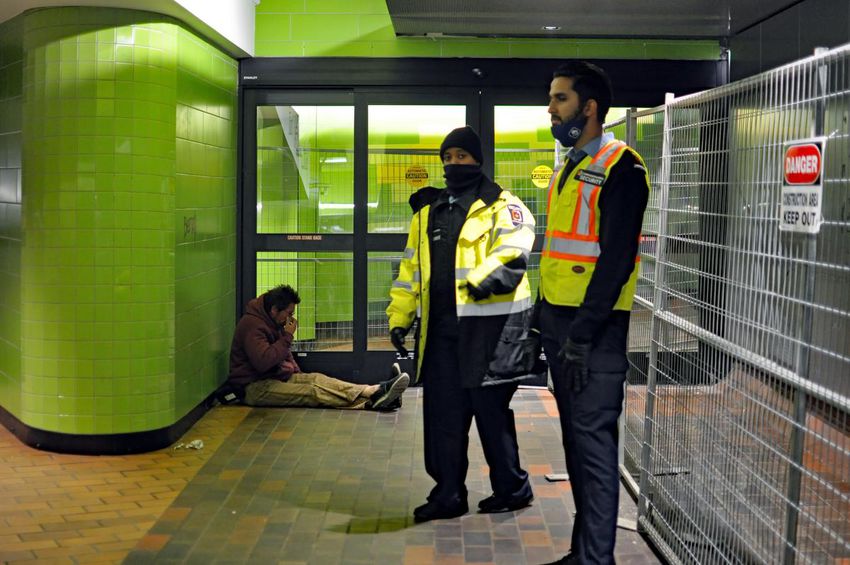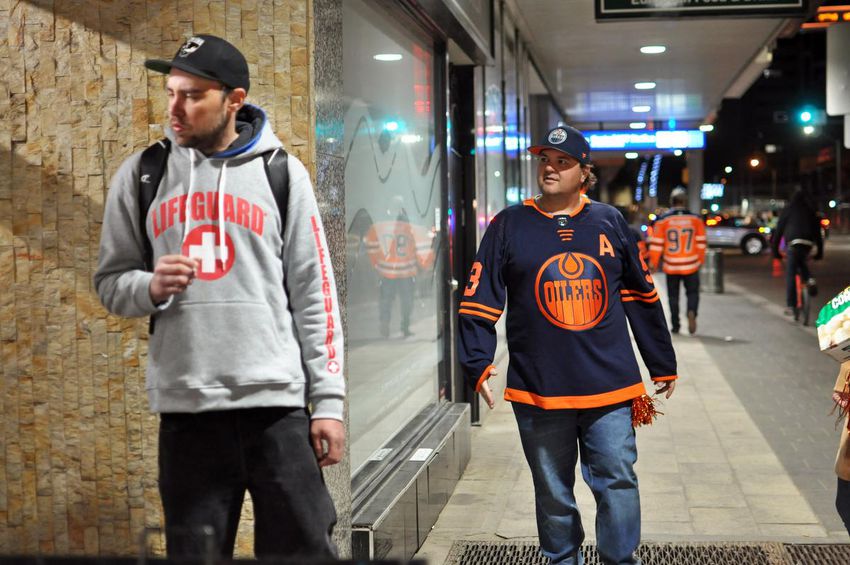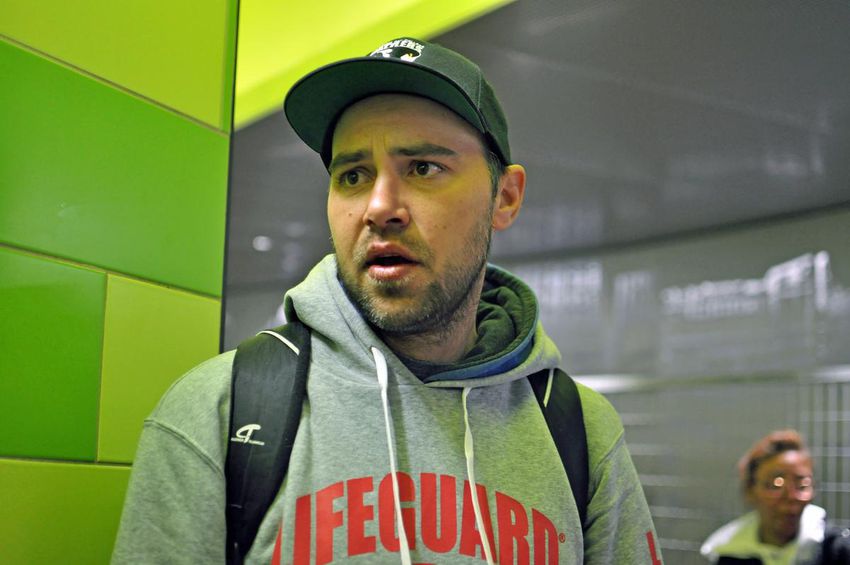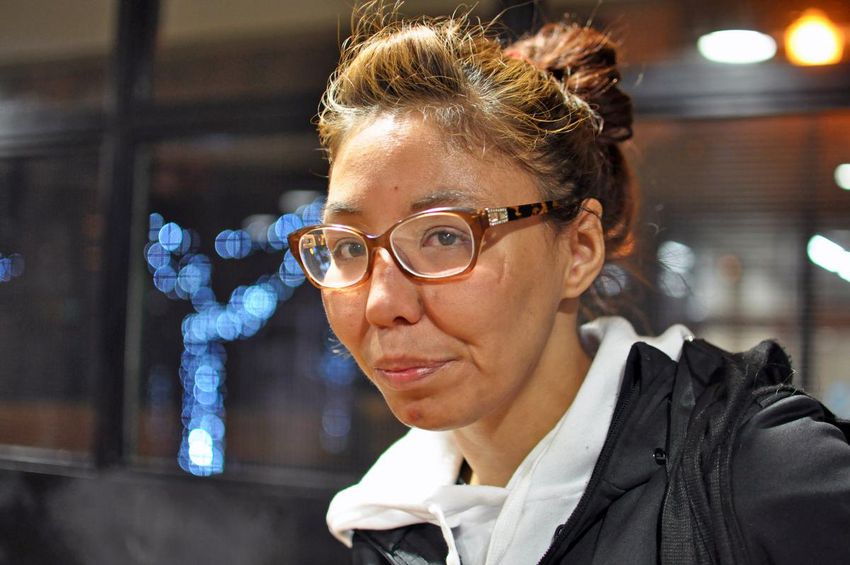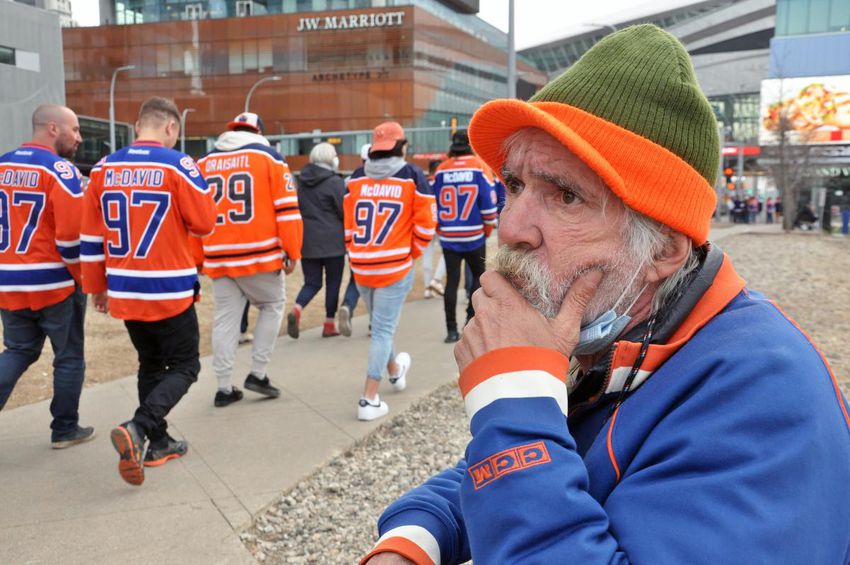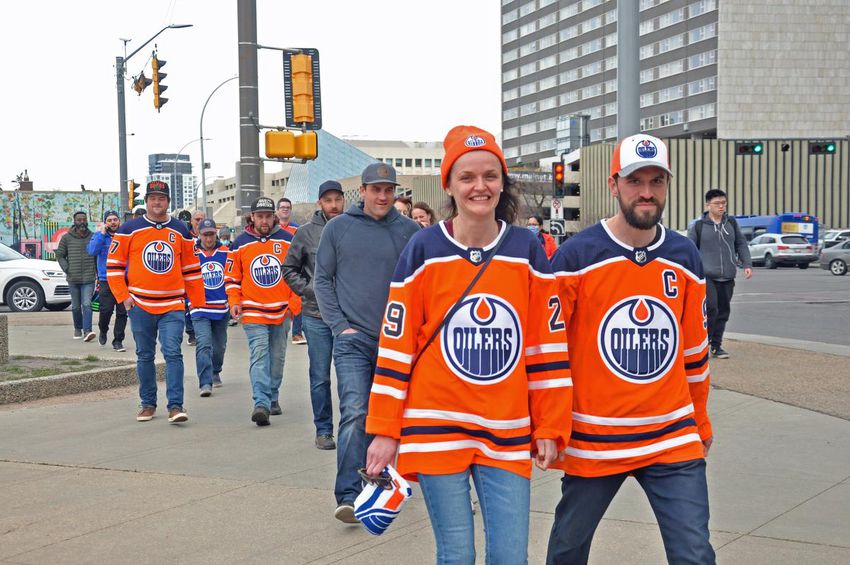EDMONTON—There’s a strange stillness in Edmonton’s Central LRT station as a man in a gray sweatshirt stands on the concrete stairs and focuses intensely on inhaling smoke through a dirty glass pipe. He’s somewhat lucid, at first, his words from him slurred.
As he speaks of not being able to use the bathrooms in the underground station, the acrid smell of urine that perpetually lingers in the area penetrates the smoke that’s slinking through the air.
Suddenly, a man in a white lab coat and a surgical mask emerges from a glass door at the top of the stairs and screams at the smoker to “stop smoking crack,” because there are patients inside.
“This is a doctor’s clinic!” he yells at the man with the pipe. “They’re all looking outside the window here. People are gonna get sick.”
Another man kicks a nearby LRT station door, yells a racial slur and swears incoherently.
In recent months, crime and disorder have been a dilemma for residents, for people who are experiencing homelessness and for this city’s leaders, who are trying to come up with a strategy.
Edmonton city council’s community and public services committee will next week discuss alternatives for addressing the situation, such as a centralized dispatch system, where people can get support from a social worker rather than a police officer.
On this particular Tuesday, it’s about 5 pm and the Edmonton Oilers are playing Game 5 at home in the first round of the Stanley Cup playoffs.
Later, as the Oilers struggle against the Los Angeles Kings, a downtown resident walks by that same LRT station.
She says she no longer uses public transit in Edmonton after an incident in which she was followed and harassed by a man in an underground station.
“I didn’t feel safe,” says Candice, who asks that her last name not be used, for safety reasons.
“When that happened, with the guy following me, they couldn’t even find a security guy to come out and help.”
When police finally did arrive and arrest the man, she says, she was told they had already dealt with him five times that day. She was later told he was released that evening.
“That’s kind of how I learned people aren’t really taken care of; they’re just left to their own devices … which puts everyone else at risk.”
The playoffs are all the buzz in Alberta’s capital city, once the stage for hockey icon Wayne Gretzky, and these days for Oilers star Connor McDavid.
But just below the city streets lined with happy fans decked out in the team’s orange and blue are train tunnels where an entirely different kind of drama is playing out.
Marc Tyshynski is standing in the underground Churchill LRT station not far from the arena and talking about all the times he’s had to use a naloxone kit to revive someone in the midst of an opioid overdose.
There was that time he resuscitated his friend in a tent recently, or the incident when he says he found a shirtless woman outside of a homeless shelter lying face down in a snowbank. Fittingly, the sweater he’s wearing says “Lifeguard.”
Most recently, he had to revive someone in the LRT station. As he tried to save the person’s life, he says, people were walking by and shaking their heads in disgust.
He makes a comparison.
“What if you got hit by a car? Would you expect me to help you? Or should I just walk by and go ‘agh!’”
Tyshynski says this is just part of life living on Edmonton’s streets. In the past 14 months, he says, he’s known 18 people who have died — mostly to drug overdoses, but some to violence. As a result, he tries to always keep a Naloxone kit on him.
He says he’s been stabbed, beaten up and robbed in the transit stations and on the streets of downtown Edmonton.
Crime in Edmonton’s transit system has been a focal point as of late, along with a huge increase in opioid related deaths in the city.
According to Edmonton police data, calls for service to the transit system have increased by five per cent since 2018. During the first three months of 2022, police say there were 842 dispatches to transit centers, which averages out to about nine per day.
Of the violent incidents that take place in Edmonton’s transit centers, 24 per cent involve a weapon, such as a knife or firearm. But at a citywide level, only about eight per cent of violent incidents involve a weapon, according to police data.
While city council, local media and some transit users have recently focused on scary transit incidents, not everyone views the situation in the same way.
The Policing Committee of the Criminal Trial Lawyers’ Association put out a statement last week saying that, according to the numbers, there may not be “a significant change in transit disorder.”
“The data also shows that increased service calls to (the Edmonton Police Service) on transit correlate to some extent with increases in numbers of security guards in LRT stations reporting disorder to the EPS, and may not be caused by increases in actual transit disorder, ” it says.
However, there have been striking acts of violence recently. In late April, a 78-year-old woman broke her leg when she was shoved onto the train tracks. A 20-year-old man was charged with an aggravated assault. Early this month, a woman made headlines as she spoke out how she, her daughter and sister de ella had been violently attacked by someone for an hour while using the transit system. About a week before that, a University of Alberta student was stabbed at an LRT station.
The incidents came with a wave of media stories reflecting people’s fear of taking the train.
Meanwhile, the data around Edmonton’s opioid crisis has been cause for alarm throughout the city for months.
In the first quarter of 2022, there were 227 calls for apparent drug overdoses and 711 calls of reports of drug use and public intoxication specifically in Edmonton’s transit system, according to city statistics.
There have been more than double the number of opioid overdose deaths in Edmonton in the first quarter of 2022 compared to last year — 114 versus 53 — according to the Alberta government numbers.
The city’s mayor, Amarjeet Sohi, told the Star the situation playing out on the streets and in transit centers of Edmonton weighs heavily on his mind.
“This is the area that keeps me awake more than any other challenge that we’re facing in our city,” Sohi says. “You’re robbing people of their dignity.”
“At the same time, these social issues are causing so much disorder in our downtown, our Chinatown, our LRT system, that it’s really hindering our economic recovery.”
Sohi says since the Alberta government closed one of Edmonton’s supervised consumption sites, more people are seeking shelter in transit stations to use drugs.
“Our security offices actually observed situations where people were looking for ETS cameras and injecting in front of ETS cameras so they can be seen if they are overdosing,” he says.
Sohi says issues such as mental health, affordable housing and addiction need long-term solutions, but in the interim, the city is hiring more transit police officers, peace officers and social workers to help people feel safer and setting up an oversight body that includes Indigenous representation.
Meanwhile, Tyshynski, and his friend Judy, who’s known as “Jules of the North” on the street, are spending time in the station at around 11 pm when two security guards approach and tell them to scram.
“You can’t sit here and loiter, either get on a train or go,” one security guard says.
“We’re not sitting, we’re standing,” Judy replies.
“I don’t care,” says the guard. “No standing either.”
Tyshynski and Judy offer to show they have tickets, so security says they have to stand on a platform or go. The two decide they’re unwelcome and exit the station, but plan on going to a different one.
“That’s what we do all night, bounce around,” Tyshynski says, before Judy chimes in and finishes his sentence.
“Because we have nowhere else to go.”
While there are overnight shelters in town, Tyshynski and Judy say they avoid them for various reasons — discrimination from staff, either based on race or substance use, as well as feeling unsafe.
Tyshynski told a story of when he was staying at the Spectrum, a temporary shelter, while it was overcome with the stench of death.
“When we were staying at the Spectrum there was this dead body that was in there for two f—— months that we were smelling. We couldn’t eat breakfast,” he says.
CBC News reported on the incident at the time and quoted a staff member that said they were unsure when the person died but “it did look like they were there for some time.” The medical examiner later determined the body had been there for three weeks.
As Tyshynski and Judy leave the station, they’re on high alert. They believe security may have called police on them. Judy says her her backpack identifies her as a “street person” (a term she prefers over “transient”).
“At the end of the day, who are they to say we don’t belong? We’re just people too, right? We’re just trying to make a living and feed ourselves too,” she says. “Except everyone else has got a home.”
Above ground, there are signs that Edmonton is revitalizing, and it’s not just the hockey team. As fans funneled into the stadium on Tuesday, many spoke of how the city has changed in recent years. The huge Ice District development downtown has brought with it luxury hotels, bars, a new casino and restaurants.
Curtis Smith panhandled outside the stadium as fans streamed past. The worst that’s happened is someone once came and kicked his money holder on the ground, he says.
“I’m out on the guard, let’s just put it that way,” says Smith of life on the streets.
Peter Stetsko, owner of The Backyard, an outdoor bar situated in the shadow of Rogers Place and a block away from the area that has the highest concentration of people experiencing homelessness, says recent attention on crime doesn’t mean it’s representative of the city.
“I haven’t had one incident with a member of the vulnerable community within my fence line and outside of the fence line; 99 per cent of the time they’re completely harmless,” he says.
“I find the call that I have to make as a business owner here is 211 (Alberta resources help line) or 311 (city services), nine times out of 10, instead of 911.”
Puneeta McBryan, executive director of Edmonton’s Downtown Business Association, says she’s been hearing more reports of businesses experiencing violence, intimidation and harassment in the past three to five months.
She cites one local downtown café that had experienced staff being spat on, held at knifepoint, as well as verbal and physical assaults as well as harassment based on people’s gender, sexuality or race.
But she says she wants to clearly draw a line between people who may be loitering or causing a scene because they’re experiencing homelessness, mental health challenges or substance-use disorder, and those who are clearly crossing into “real aggression.”
“How do we distinguish between those two things and not stigmatize, not try and paint it all with the same brush, but really deliberately target where there are legitimate safety and violence issues?”
JOIN THE CONVERSATION
